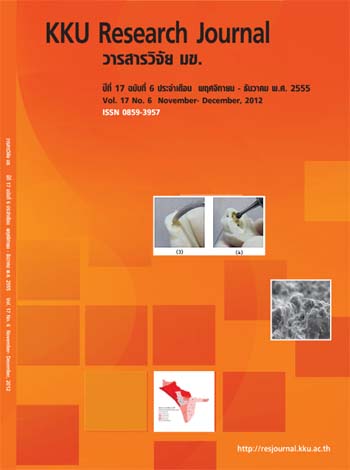Selection of nutrient parameters for endoglucanase production from rice bran by Penicillium sp. using Plackett-Burman design
Main Article Content
Abstract
Cellulose is the most abundant renewable agricultural material on earth. Endoglucanase is well known
for bioconversion of cellulose by cleaving intramolecular β-1,4-glycosidic bond randomly to useful products
such as oligomers and reducing sugar. Various substrates/byproducts and microbial cultures have been used
successfully in solid state fermentation (SSF) for endoglucanase production. Plackett-Burman design is well
established and widely used for screening important medium components affecting the production of valuable
microbial products. The aim of this study was to use Plackett-Burman design for screening of significant medium
components for endoglucanase production. The significance of fourteen medium components was determined.
The experiments were conducted at 30°C for 4 days with 70% initial moisture content. Initial pH at 7.0 and 106
spores/g rice bran of fungal inoculum were allowed in SSF under static condition with 5.0 g rice bran as a substrate.
From the results, the highest endoglucanase activity was 17.35 units/g rice bran. Eight components namely yeast
extract, KH2PO4, peptone, (NH4)2SO4, carboxymethyl cellulose (CMC), cellobiose, ZnSO4·7H2O and MnSO4·H2O
revealed a significant influence on endoglucanase production. However, only five components were selected for
further optimization since cellobiose, ZnSO4·7H2O and MnSO4·H2O provided negative effect on endoglucanase
production by Penicillium sp.


